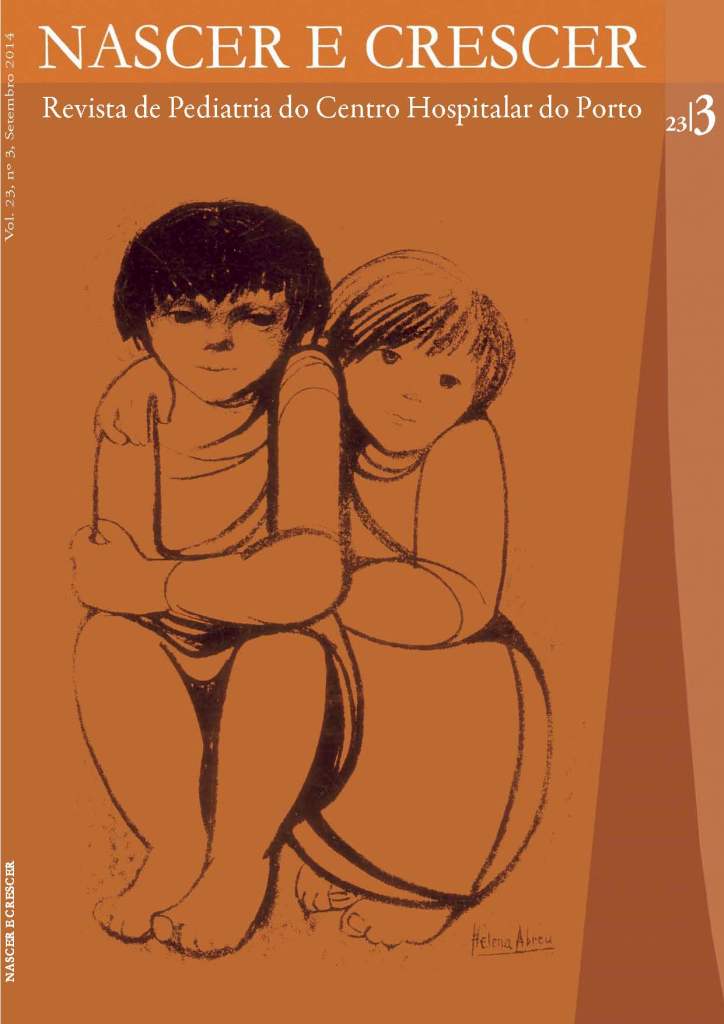Neonatal respiratory distress ... a case for ophthalmology?
DOI:
https://doi.org/10.25753/BirthGrowthMJ.v23.i3.8698Keywords:
Congenital, dacriocystocele, nasolacrimal duct, newborn, obstructionAbstract
Introduction: Congenital dacryocystocele is a rare nasolacrimal duct obstruction in the newborn, which can give early symptoms. Pathophysiology derives from the proximal and distal obstruction of the nasolacrimal duct. Clinical presentation includes cystic formations, infected or not, diffi culty in breastfeeding or breathing diffi culties. Classic presentation is a bluish, cystic, firm mass below the medial canthus, The correct diagnosis requires further investigation. Therapeutic intervention is dependent on the clinical outcome and may include antibiotics, local therapy and surgical intervention. Prognosis is good and usually does not imply future sequels.
Case report: The authors present the case of a newborn, admitted in the 2nd day of life for respiratory distress. Physical examination showed signs of respiratory distress and bruise on inner corner left eye. There was subsequent development of quistic formation with inflammatory signs, with an initial diagnosis of dacryocystitis who, after CT scan of the orbits showed to be a dacryocystocele.
Conclusion: Respiratory distress may be considered a case for ophtalmologic evaluation.
Downloads
References
Levin AV, Wygnansky-Jaffe T, Forte V, Buckwalter JA, Buncic JR. Nasal endoscopy in the treatment of congenital lacrimal sac mucoceles. Int J Pediatr Otorhinolaryngol 2003; 67:255-61.
Cavazza S, Laffi GL, Lodi L, Tassinari G, Dall’Olio D. Congenital dacryocystocele: diagnosis and treatment. Acta Otorhinolaryngol Ital 2008; 28:298-301.
Hain M, Bawnik Y, Warman M, Halperin D, Leiba H. Neonatal dacryocele with endonasal cyst: revisiting the management. Am J Otolaryngol 2011; 32:152-5.
Allali J. Lacrimal pathology in the infant and the child. Arch Pediatric 2010; 17:1609-16.
Álvaro B G, Esperanza G D, Eugenio P B. Dacriocele. Atlas Urgencias en Oftalmologia. Vol II. 1st. Barcelona: Editorial Glosa; 2003. p.280.
Mackenzie PJ, Dolman PJ, Stokes J, Lyons C J. Dacryocele diagnosed prenatally. Br J Ophthalmol 2008, 92:437-38.
Helper KM, Woodson GE, Kearns DB. Respiratory distress in the neonate. Sequela of a congenital dacryocystocele. Arch Otolaryngol Head Neck Surg 1995; 121:1423-5.
Varnell H, Friedman NR, Shea C, Jones MD Jr. An unusual cause of neonatal respiratory distress. J Perinatol 2003; 23:688-90.
Wong RK, VanderVeen DK. Presentation and management of congenital darcryocystocele. Pediatrics 2008; 122:1108-12.
Paysse EA, Coats DK, Bernstein JM, Go C, de Jong AL. Management and complications of congenital dacryocele with concurrent intranasal mucocele. J AAPOS 2000; 4:46-53.
Shashy RG, Durairaj V, Holmes JM, Hohberger GG, Thompson DM, Kasperbauer JL. Congenital Dacryocystocele associated with intranasal cysts: diagnosis and management. Laryngoscope 2003; 113:37-40.
Downloads
Published
How to Cite
Issue
Section
License
Copyright and access
This journal offers immediate free access to its content, following the principle that providing free scientific knowledge to the public provides greater global democratization of knowledge.
The works are licensed under a Creative Commons Attribution Non-commercial 4.0 International license.
Nascer e Crescer – Birth and Growth Medical Journal do not charge any submission or processing fee to the articles submitted.


